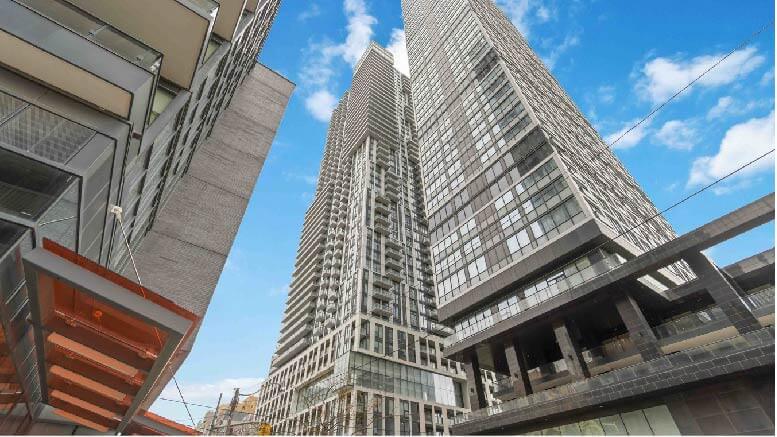HOA boards have a vital responsibility to understand reserve studies that protect their community’s financial health. These complete analyzes help boards plan ahead for repairs and replacements of common area components. The proper reserve planning will give a solid foundation to maintain adequate funds for major expenses.
HOA boards must learn the core elements of reserve studies to meet their fiduciary duties effectively. A full picture of reserves combines physical analysis with detailed financial strategies. This vital tool helps boards protect property values and meet legal requirements for managing the community.
What is a Reserve Study?
Definition and purpose
A reserve study analyzes an HOA’s current and future spending needs. This complete evaluation helps associations stay financially and physically healthy through smart money planning. The study examines common areas in detail and analyzes costs that give HOAs a clear picture of the funds they need to maintain all their components.
Components of a reserve study
Reserve studies cover two basic analyzes:
- Physical Analysis: A detailed inspection of common areas that identifies components and reviews their current conditions
- Financial Analysis: Reviews the association’s reserve fund status and determines if accumulated reserves meet projected needs
The study builds on components that meet a specific four-part test: association responsibility, limited useful life, predictable remaining life, and above minimum threshold cost. The analysis follows five key steps that include inventory compilation, condition assessment, cost estimation, funding status evaluation, and development of a funding plan.
Types of reserve studies
Reserve specialists offer three different levels of studies that match an association’s specific needs.
Full Reserve Study: A complete evaluation that examines all common areas and creates baseline component data. This study becomes the foundation for future updates. Most associations need this study only once in their lifetime.
Update with Site Visit: Reserve specialists conduct this study every three years. They inspect the property and verify existing component data. The process involves spot checks and adjusts funding needs based on current conditions.
Update without Site Visit: This money-focused update makes use of existing data to adjust costs and funding needs. Associations choose this option between site visits to keep their financial projections accurate without physical inspections.
The Importance of Reserve Studies for HOAs
Reserve studies are crucial to the financial health and stability of homeowners associations nationwide. Property values rise substantially and financial challenges decrease when associations maintain strong reserves, according to recent data.
Financial planning and stability
Smart reserve planning protects associations from financial shocks and keeps operations running smoothly. Communities that update their reserve studies yearly show a 35.1% decrease in special assessments. Associations that perform updates every three years see a 28.5% reduction in unexpected fees. This approach makes shared decision-making easier and helps boards to:
- Look ahead for major repairs
- Keep assessment levels steady
- Stop financial emergencies before they happen
- Build stronger relationships with homeowners
Legal compliance and fiduciary duty
Board members need to know their legal obligations about reserve studies. Several states require regular updates to these studies, and some demand reviews every three years. The board’s fiduciary duty demands smart fiscal management while you retain control of adequate reserves. Legal precedents show that boards can breach this duty when they fail to fund reserves properly.
Maintaining property values
Reserve studies directly affect property values within communities. Research shows that associations with strong reserves (over 70% funded) managed to keep property values 12.6% higher than those with weak reserves (under 30% funded). Properties that stay well-maintained attract more buyers and create stable communities.
The financial effects go beyond immediate maintenance needs. Properties in associations with proper reserve funding sell at higher market values and appeal more to prospective buyers. On top of that, communities with healthy reserves can afford preventive maintenance. This extends their common area assets’ lifespan and helps avoid emergency repairs that can get pricey.
Key Elements of a Reserve Study
A detailed reserve study includes three critical elements that help HOA boards make informed decisions about their community’s future. These elements create a solid financial and maintenance strategy together.
Physical analysis of common areas
Physical analysis and detailed component inventory are the foundations of a reserve study. Specialists identify and review all major amenities and common areas during this phase. They determine repair or replacement costs based on contractor estimates. The assessment has these key aspects:
- Current condition evaluation
- Remaining useful life calculation
- Replacement cost projections
- Component quality assessment
Financial analysis and funding strategies
Financial analysis reviews the association’s reserve fund strength and determines appropriate contribution rates. The analysis measures the fund’s health through a “percent funded” calculation and provides a clear picture of financial stability. The Community Associations Institute recommends wanting 100% funding to maintain adequate reserves.
Projected timeline for repairs and replacements
HOAs can plan 20 to 30 years into the future with these projections. This schedule shows when major components need maintenance or replacement. Several factors shape this timeline.
Reserve analysts study the community’s blueprints and governing documents to understand the association’s responsibilities. On top of that, they assess all recurring expenses and typically add a 2% yearly increase to cover inflation.
HOAs keep their projections accurate by updating them regularly and adjusting their funding plans. The National Reserve Study Standards suggest yearly reviews to track changing conditions and costs. This strategy helps associations stay financially stable and protect property values.
Implementing Reserve Study Recommendations
Reserve study findings need a well-planned approach that combines thoughtful planning, clear communication and consistent monitoring to succeed. HOAs achieve better results when they balance their current needs with long-term financial stability to manage their resources properly.
Developing a funding plan
Financial institutions suggest creating a complete funding strategy that lines up with legal requirements and community needs. Boards can avoid seeking extra costs outside regular fees when they maintain current reserve studies. Investment options should be explored to generate better returns while managing risk in today’s economic climate.
Communicating with homeowners
Clear communication serves as the life-blood of successful reserve study implementation. The board needs to stay transparent about funding strategies and upcoming projects. Communication must include these essential elements:
- Sharing detailed project timelines
- Explaining assessment calculations
- Providing regular financial updates
- Making meeting opportunities available
Professional guidance recommends that boards should make their meetings available to all homeowners and publish detailed minutes when members cannot attend. Educational sessions help new board members grasp financial statements and understand reserve study interpretations better.
Regular updates and adjustments
The Community Associations Institute suggests site-based inspections should happen every three years. Properties that are older or more complex need updates every 2-3 years. Newer properties can wait longer, usually 3-5 years between updates. The numbers tell an interesting story:
- Reserve study updates happen within three years 39% of the time
- Most communities – about 88% – update their studies within five years
Thriving communities consistently show these three key traits in their update strategy:
- They maintain enough funds to complete projects on time
- They stay flexible when codes change
- They know how to handle cost increases without special assessments
HOAs that regularly monitor and fine-tune their reserve study recommendations protect their financial health and their community’s property values.
Conclusion
Effective Reserve Study Management
Reserve studies are the foundations of HOA boards’ financial planning and property maintenance. These complete analyzes help boards decide funding requirements and meet their fiduciary duties. Boards can protect property values and run stable operations through detailed property assessments and financial planning.
A successful reserve study needs regular updates, open communication with homeowners, and strategic collaborations. Property values rise and special assessments decrease when HOA boards follow professional advice about updates. Strong reserve planning builds stable communities. Homeowners enjoy well-maintained facilities and predictable fees that ensure their association’s long-term success.
Related Articles:
- Reserve Study Basics: Essential Planning for HOA Boards
“Essential planning tips for HOA boards conducting reserve studies.” - Conducting Effective Reserve Studies in Kentucky
“Learn how to conduct effective reserve studies in Kentucky.” - Reserve Study: What Is It And Its Purpose?
“An overview of what a reserve study is and its purpose.”








